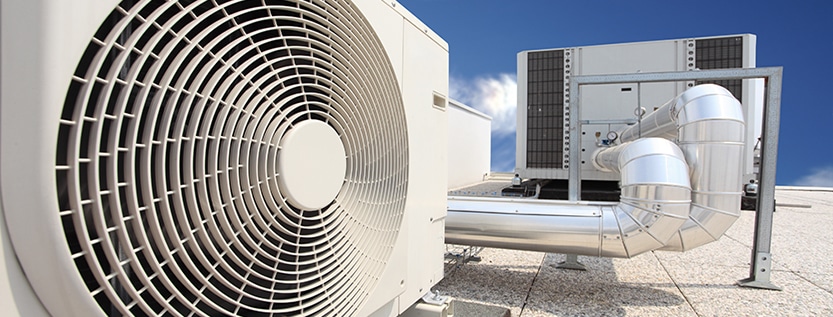
Cooling Systems
Planning of cooling systems
Cooling systems are primarily used for room air conditioning, but also for cooling food and IT equipment. However, they are also an integral part of many industrial production processes. In addition to heat supply systems, cooling system is also an essential component of technical building equipment.
What are cooling systems?
Cooling systems are permanently installed devices whose task is to reduce the temperature in a defined area below room temperature. Portable devices such as refrigerators or freezers do not count as cooling systems, nor do air conditioning systems.
These belong to system group 3 of the HOAI, room air technology, because they do not only cool, but also regulate the air temperature and humidity and additionally clean it. Depending on their design, cooling systems can consume a great deal of energy, especially if they work inefficiently and are also oversized. This can drive up the operating costs of a building enormously.
Which systems are available?
To list them all would go beyond the scope of this article. The compression and absorption principles are most frequently used for cooling systems.
Compression cooling systems are widely used. They consist of a closed system in which a refrigerant circulates, driven by a pump. In the first phase, the refrigerant is compressed by a compressor. In the heat exchanger it condenses and releases heat to the environment. The pressurized refrigerant is led to the evaporator, where a pressure drop occurs. It evaporates, absorbing heat from the environment. It then returns to the compressor and the cycle starts again. Refrigerators and freezers, but also cooling systems in cold stores, breweries and slaughterhouses work according to this principle.
In contrast, an absorption cooling system does not need a compressor. The compression of the refrigerant (often water is used) is done by dissolving (absorbing) it in the solvent. Absorption takes place at low temperatures and desorption at high temperatures, similar to a compression cooling system, refrigerant and solvent circulate in a closed circuit. In everyday life, absorption cooling systems are mainly used in camping refrigerators, which are operated with propane gas as the energy source. Absorption cooling systems are widely used in industry, especially when chemical or industrial processes provide sufficient waste heat to be used for cooling generation.
There are also a number of other types of cooling systems that operate according to other principles, such as the Linde process. Other cooling systems, for example, are used to generate very low temperatures and are used to liquefy gases.
How important are cooling systems in building equipment?
They represent a major challenge for engineers because they require a great deal of effort during construction and corrections are difficult or impossible to make afterwards. Intensive communication and discussion with the client is necessary right from the planning stage.
Many cooling systems are not standard systems, but customized solutions, for whose realization the engineer depends on the data provided by the client. One of the most common mistakes is, for example, that cooling systems are oversized.
This means an unnecessary increase in operating costs. Together with the client, the engineer must search for solutions that are optimally suited to the specific conditions.
Summary
Cooling systems are facilities which serve to reduce the temperature in a certain area below the ambient temperature. A number of different processes are used to generate cold. Compression and absorption cooling systems are used particularly frequently.
The use of cooling systems requires great care already at the planning stage because they have a high energy requirement. Many cooling systems are individual solutions because they are built according to customized specifications.



